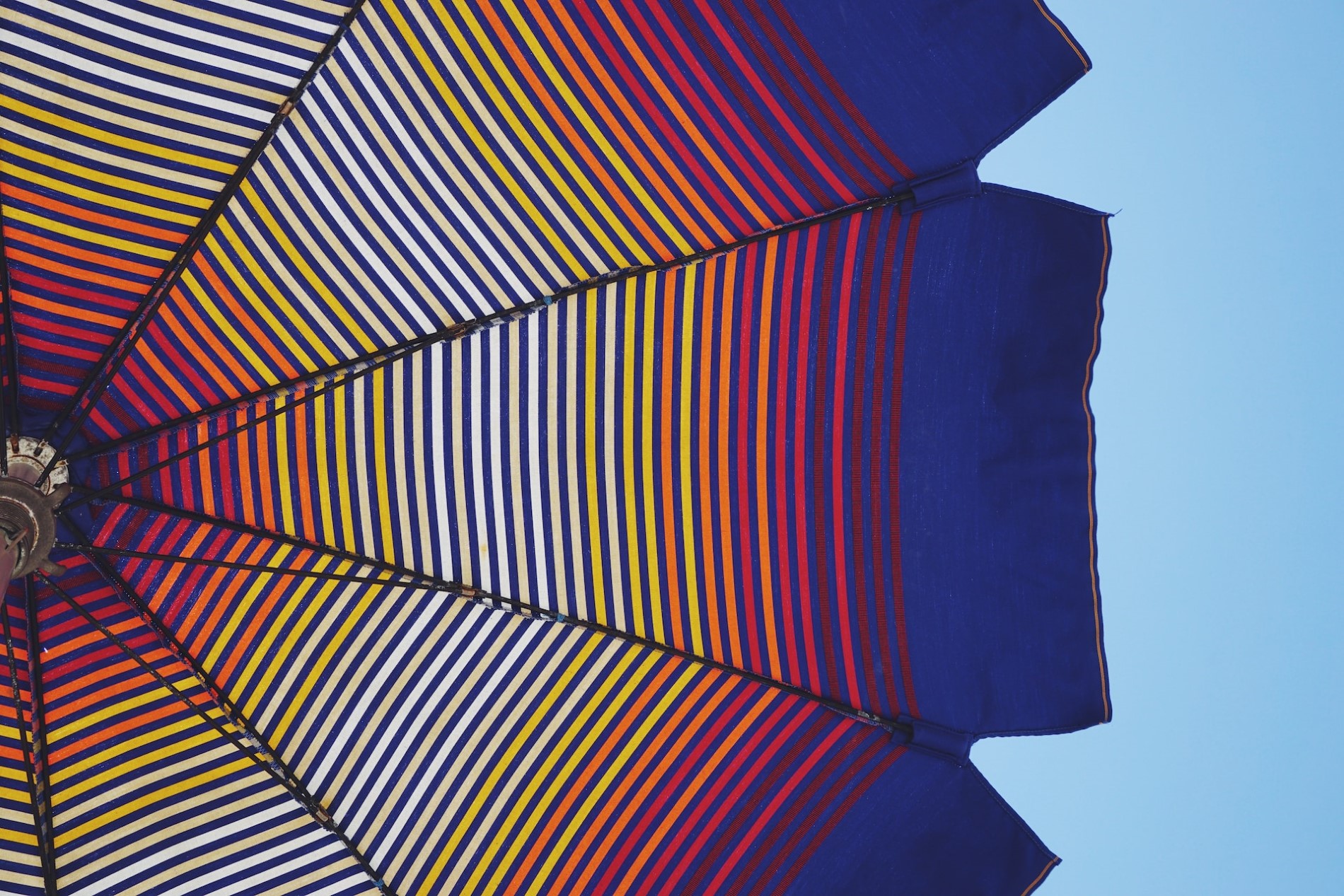After the recent heatwave and final arrival of summer, here are our top tips for staying safe in the sun and avoiding sunburn.
Ultraviolet (UV) rays is the energy that is released naturally by the sun and there are two main types that can damage our skin and lead to skin cancer. UVA penetrates deeply into the layers of the skin and results in ageing the skin. UVB is responsible for most sunburns. As we can’t feel UV rays, you can’t tell if you’re at risk of burning based on the temperature. A UV index of three or more can still result in a burn, even if its cloudy outside, thankfully, most weather apps now update us on the UV index each day. In the UK, the suns UV rays are at the strongest between 11am and 3pm from the middle of March to October.
Too much UV radiation can damage the DNA in our skin cells and if enough damage builds up over time, it can result in the cells starting to grow out of control which can lead to skin cancer. Anyone can develop skin cancer but those of us that burn more easily have an increased risk; this is because the burn is a clear sign of damage and your bodies response to repair it. Cancer research has found that getting sunburnt just once every two years can triple your risk of melanoma skin cancer when compared to never being burnt!
Top tips to stay safe in the sun
- Stay in the shade – Shade-bathing, instead of sun-bathing, gives you a breather from the heat as well as the sun while still being able to enjoy the warmth. Take care when under trees though as in dappled shade you may still be exposed to UV rays.
- Cover up – wearing loose fitting and dark clothing blocks the UV from reaching your skin. Make sure your clothing is a close weave to give you maximum protection. As a guide, hold the material up to the light and if you can’t see through the fabric, its a close weave.
- Wear a hat – a wide brimmed hat is more than just a statement piece; the bigger the brim the more your ears, neck and shoulders are covered!
- Wear the right suntan lotion – look for a sunblock that protects you against UVA and UVB rays as not all of them do! Aim to wear something with a sun protection factor (SPF) of 15 or more.
- Apply suntan lotion correctly – most people do not apply enough lotion. You want to spread an even and thick layer everywhere the sun may hit you. Take extra care when using a spray instead of a cream as it can be harder to know how much you’ve applied.
- Reapply that lotion – One application may not be enough if you’re exposed to the sun for over an hour. Clothing and sweating can rub suntan lotion off, so even if you’ve not dipped into the pool or the sea, you still need to reapply approximately every 2 hours.
- Check the date – suntan lotion can go off, so always check the bottles at the beginning of the season to see how long they have left. There should be a number on the back of the bottle with an M next to it, this is the number of months that it can be open for. Make sure its in date as applying out of date sunscreen will mean you’re not as protected as you think you are.
- Apply even when cloudy – use a moisturiser with added SPF to wear on your face everyday as a minimum between March and October. Even if you don’t spend much time outside, UV rays can still penetrate through the glass when driving which can result in skin ageing prematurely.
- Check your shadow – look at your shadow and if it is shorter than your height this means that the sun’s UV rays are strong. This is when you’re more likely to burn and need to take care and protect your skin, especially if you get sunburnt easily.
If you do get sunburnt, it is important to start treating it as soon as possible.
- Get out of the sun as soon as possible.
- Take frequent cool baths or showers to help relieve the pain – when you get out of the shower, gently pat yourself dry instead of rubbing over the sensitive area.
- Regularly apply moisturiser or after sun – using a product which contains Aloe Vera and moisturising regularly helps to ease the dry skin.
- Drink more water – a sunburn draws fluid to the skin’s surface and away from the rest of the body. Increasing your water intake helps prevent dehydration and can help to keep you cool.
- Cover sunburnt skin from direct sunlight until skin has fully healed – wear tightly woven, but loose fitting clothing when out in the sunshine to protect your skin from further irritation.
Getting sunburnt once doesn’t mean you will definitely get skin cancer, but reduce your risk by being sun savvy and following the tips above. Let us know if you have any helpful tips that we haven’t mentioned on our social media channels.
Get in touch with Spinavita Chiropractic
Call
Explore more
Top Tips
More about Nutrition for Wellbeing: A Seasonal ApproachNutrition for Wellbeing: A Seasonal Approach
By Sydney Fielden-Stewart
Top Tips
More about Reduce the Risk of Injury This WinterReduce the Risk of Injury This Winter
By Melissa Folly
Top Tips
More about Staying Motivated This WinterStaying Motivated This Winter
By Anna Hawrot
Top Tips
More about Reclaiming your fitness after having a baby: A postpartum guide to getting back to exerciseReclaiming your fitness after having a baby: A postpartum guide to getting back to exercise
By Anna Hawrot
Sign-up for updates
Join our community! Sign up for exclusive updates, wellness tips, and special offers delivered straight to your inbox.











